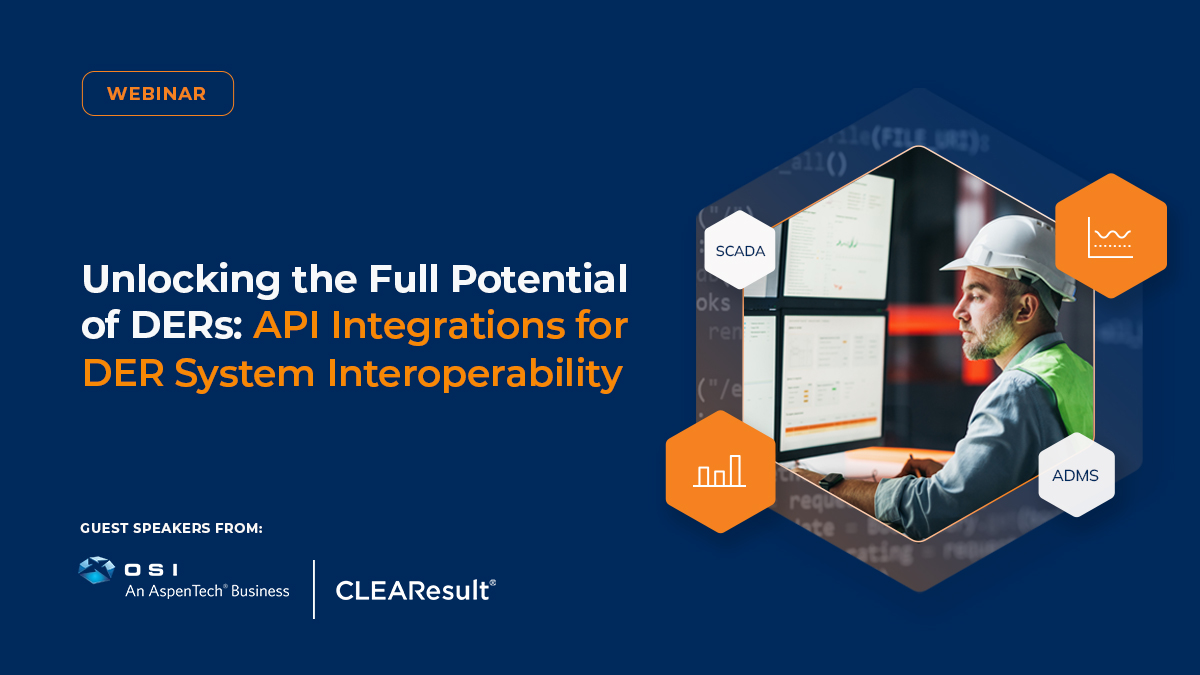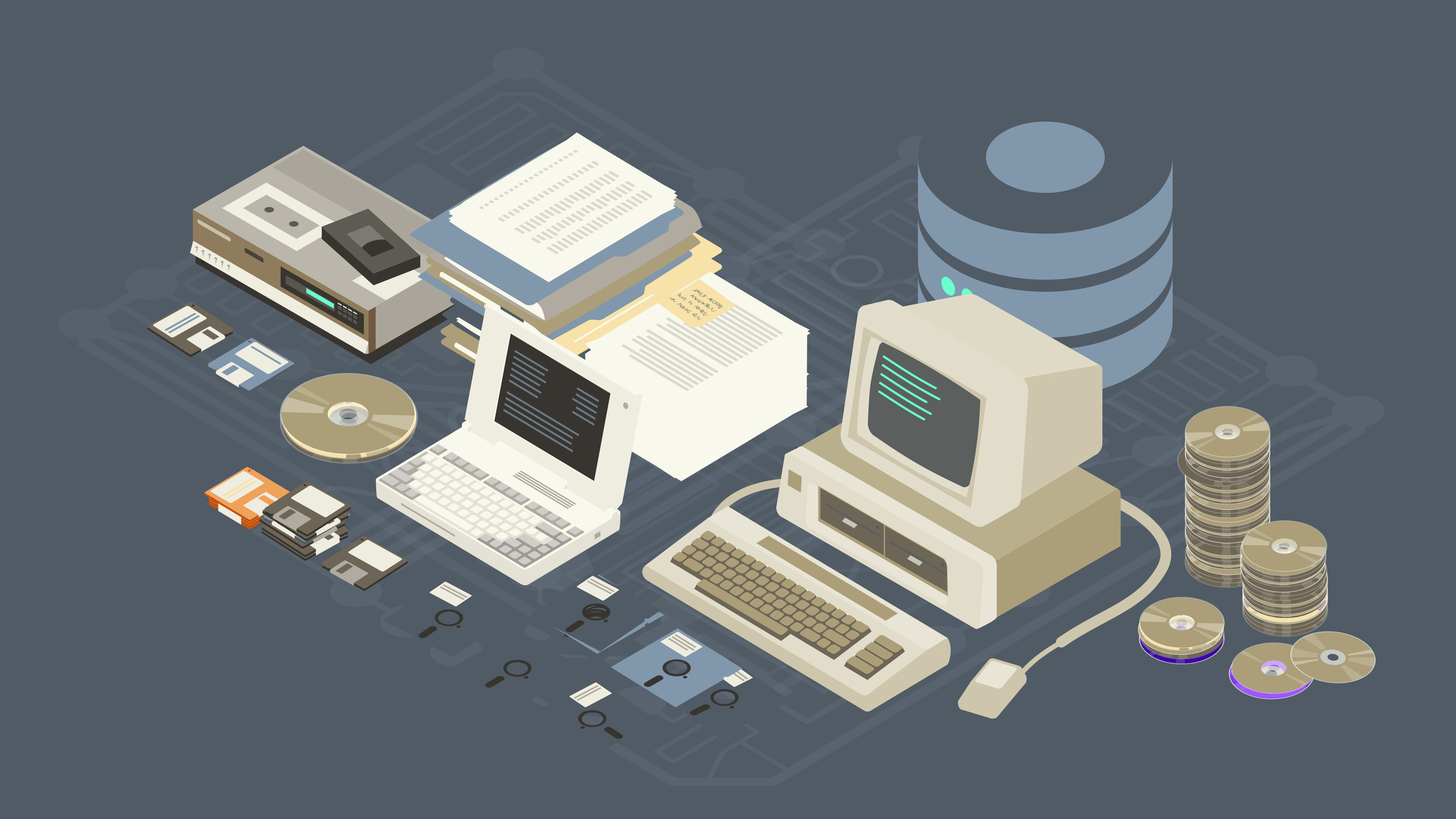Last week, a panel of experts came together to share tips and strategies for maximizing the full value of distributed energy resources (DERs) by leveraging multiple types of API integrations. In our rapidly evolving energy landscape, distributed energy resources (DERs) are playing an increasingly vital role in grid modernization. But how do we truly unlock their full potential?
We address that answer in our most recent webinar, outlining strategies and considerations for strategic API integrations to achieve seamless system interoperability. Featuring experts Jon Curtis (Strategic Planning Manager, Emerson AspenTech), Mark Foreman (Director, Distributed Energy Resources Practice, CLEAResult), and Katarina Struckmann (API Product Manager, Virtual Peaker), and moderated by Jeff Quigley (SVP Customer Solutions, Virtual Peaker), the discussion offered practical strategies and lessons learned for successful DER integration. In case you missed it, we’ll outline the key takeaways here, or you can watch the replay!
Types of API Integrations that Benefit DER Control
The webinar kicked off by categorizing the various types of integrations crucial for DER success:
- OT (Operational Technology) Systems: Integrations with SCADA and ADMS are fundamental. These often involve one or two-way connections for event calling (e.g., instructing a distributed energy resource to shift load) and data streaming, providing real-time insights into grid operations and DER performance.
- CIS (Customer Information System) and CRM (Customer Relationship Management): These connections, often one or two-way, leverage homeowner information for enrollment verification and tailored messaging. Real-time integration with CRM systems is paramount for a superior customer experience, ensuring contact centers have up-to-date information on participants.
- Device Partner Integrations: The backbone of any DER platform, these are two-way connections with device manufacturers (thermostats, batteries, water heaters, etc.). They enable demand response enrollment, facilitate event dispatch to devices, and allow for the streaming of performance data for monitoring and measurement.
- Data Ingestion Integrations: Typically one-way, these connections bring in external contextual data like energy rates, weather, or AMI/demand data. This richer dataset supports more informed decision-making and accurate measurement and verification (M&V) of distributed energy resource (DER) program impacts.
- Analytics Integrations: These can be one or two-way connections with external tools for advanced monitoring, visualization, analysis, incentive computation, and report generation, extending the native capabilities of DER management platforms.
Understanding Open Standards
Within the types of possible integrations, there are also multiple technical considerations and methods for deploying these system connections. Our panel of experts weighed in on the critical (and sometimes controversial) choice between open and closed standards for integration. There are multiple factors to evaluate when weighing the pros and cons of using open standards.
Open Standards
Open standards simplify integration work, accelerate rollouts, and offer greater vendor flexibility. They are highly reusable and can be extended with custom fields to support specific use cases. However, their generality can sometimes necessitate additional agreements on specific fields and units. (A fantastic example of open standards in action is the Virtual Peaker Gravity Connect API).
Closed Standards
While often necessary when open standards aren’t available (for example, with Tesla devices), closed standards can be less flexible and may require more specific agreements on data exchange. They might also lack critical features like direct enrollment. The panelists emphasized that while certification to a standard is good, being truly compliant and understanding the capabilities built within a standard are equally important for successful implementation.
The most crucial factor in choosing a standard is to clearly define the integration’s purpose and the capabilities required (enrollment, event calling, data streaming, analytics). Also, considering the existing support for standards by both integrating parties can significantly expedite the process.
Strategies for System Interoperability
It’s important to understand the scope of how your systems can work together, and what impacts you can maximize by combining your technology stack. System interoperability across various operational and enterprise platforms can include many cross-functional opportunities, including:
Distributed Energy Resource Management Systems (DERMS) with SCADA & ADMS
Integrating distributed energy resource management systems (DERMS) with these operational technology systems provides real-time network visibility. This allows for localized demand response calls, improved power quality by leveraging DERs for Volt/VAR support, and better fault location in an ADMS world.
AMI Integration
Advanced metering infrastructure (AMI) integration offers crucial behind-the-meter visibility, enhancing power quality estimations and even enabling dispatch controls to smart inverters through next-generation meters.
Enterprise DERMS & Edge DERMS
The integration between enterprise-level DERMS (like Emerson AspenTech’s OSI DERMS) and edge DERMS providers (like Virtual Peaker) creates a “single pane of glass” for operators, combining front-of-the-meter and behind-the-meter data for comprehensive grid management.
Strategies for Successful Integrations
Before you dive into the technical details of how to implement any integration, it’s important first to ensure that you understand which business case you’re trying to solve, and what your expectations for functionality are. These key considerations can be used as a roadmap for successful distributed energy resource integrations:
- Define the Goal/Business Case: Clearly articulate the “why” behind the integration. Is it to increase enrollment, support control room decisions, or ensure regulatory compliance?
- Identify the End User: Understand who will be using the integrated system, their existing workflows, and what additional data or functionality would enhance their decision-making.
- Determine Success Criteria: Quantify how success will be measured, whether it’s through peak load savings, increased enrollment numbers, or saved person-hours.
- Phased Approach: For complex integrations, break them down into manageable phases. This allows for earlier realization of benefits and mitigates the risk of delays.
- Proper Design and Planning: Create a detailed integration matrix outlining information flow, protocols, and data exchange frequency. This upfront planning is critical.
- Thorough Testing: Test early and often to identify and resolve issues related to networking, configurations, and data integrity. Vendor collaboration during this phase is crucial to prevent “ping-pong” blame games.
Conclusion: Unlocking the Full Potential of Distributed Energy Resources: API Integrations for DER System Interoperability
With thoughtfully outlined goals and the right technological approach, integrations can help you unlock the full value of distributed energy resources. While the market for full grid & grid-edge DERMS deployments is still in early days, there’s immense growth potential. Staying ahead of this curve is key to capitalizing on its success. Integrations are not just technical necessities; they are mission-critical enablers for scaling DER programs, improving grid efficiency, and enhancing the overall customer experience. The future of a modern, resilient, and sustainable grid hinges on our ability to effectively integrate and orchestrate the growing fleet of DERs.






